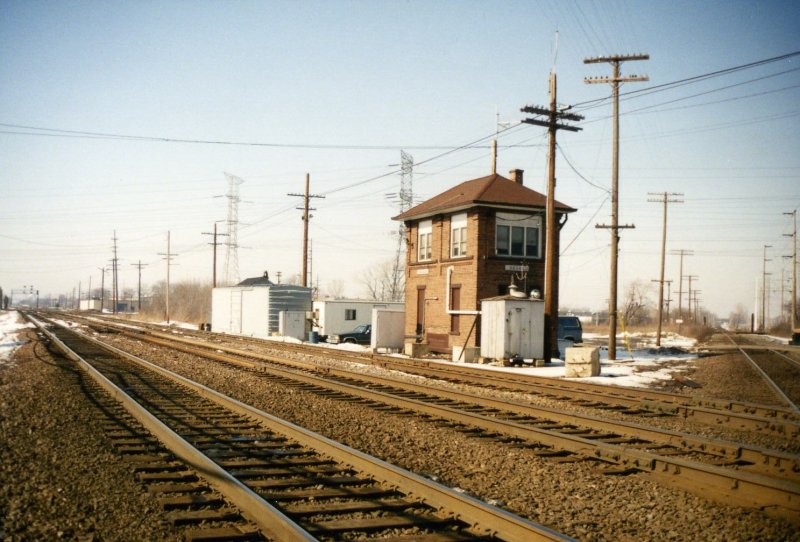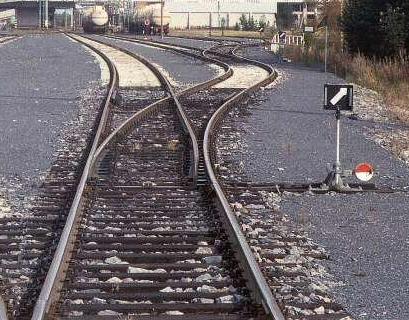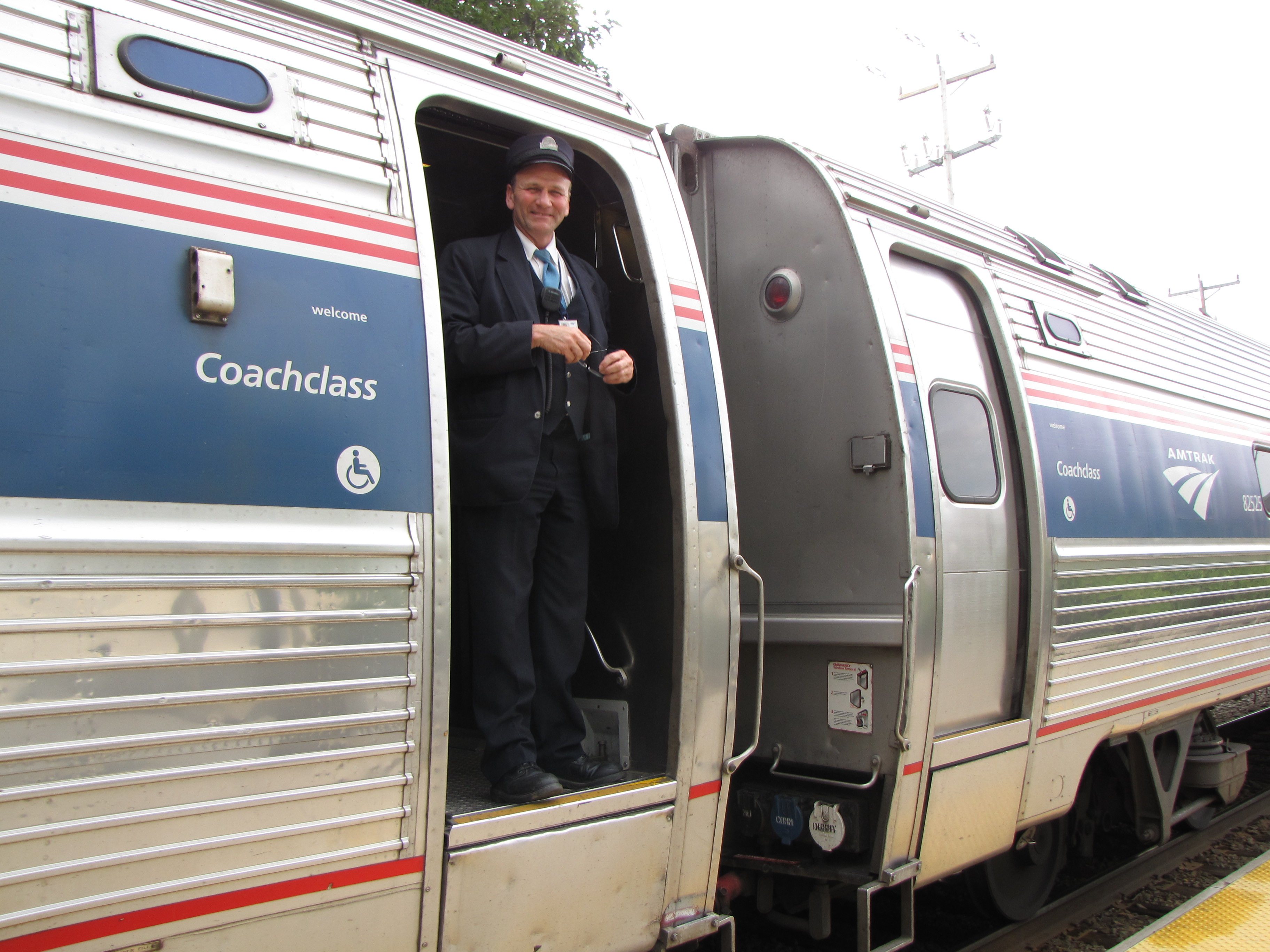|
St Albans Railway Station, Melbourne
St Albans railway station is a commuter railway station on the Sunbury line, which is part of the Melbourne railway network. It serves the western suburb of St Albans, in Melbourne, Victoria, Australia. St Albans station is a below ground premium station, featuring two side platforms. It opened on 1 February 1887, with the current station provided in 2016. History St Albans station opened on 1 February 1887. It was provided at the request of a land development company that was sub-dividing the area. The company manager, Alfred Padley, asked for the station be named St Albans, apparently due to his forebears having an association with the English city of the same name. Originally, only three trains each way passed through St Albans on weekdays, and passengers had to inform the train guard at the prior stop if they wanted to alight there.Newsrail November 1988 p328-331 In 1888, a local service was provided, although it could not start operating to St Albans until 19 November o ... [...More Info...] [...Related Items...] OR: [Wikipedia] [Google] [Baidu] |
Public Transport Victoria
Public Transport Victoria (PTV) is the brand name for public transport in the Australian state of Victoria. It was previously the trading name of the Public Transport Development Authority (PTDA), a now-defunct statutory authority in Victoria, responsible for providing, coordinating, and promoting public transport. PTV began operating on 2 April 2012, taking over many of the responsibilities previously exercised by the Director of Public Transport and the Department of Transport. It also took over the marketing of public transport in Victoria from Metlink and Viclink, as well as responsibility for the myki ticketing system, formerly handled by the Transport Ticketing Authority. PTV's functions were transferred to the Department of Transport and Planning (DTP) on 1 July 2019. However, PTV continues to exist as the brand for public transport services in Victoria and refers to the Public Transport division of DTP. Governance PTV was the trading name of the Public Tr ... [...More Info...] [...Related Items...] OR: [Wikipedia] [Google] [Baidu] |
Sunbury Line
The Sunbury line is a commuter railway line in the city of Melbourne, Victoria, Australia. Operated by Metro Trains Melbourne, it is the city's fifth longest metropolitan railway line at . The line runs from Flinders Street railway station, Flinders Street station in central Melbourne to Sunbury railway station, Melbourne, Sunbury station in the city's north-west, serving 18 stations via North Melbourne railway station, North Melbourne, Sunshine railway station, Melbourne, Sunshine, St Albans railway station, Melbourne, St Albans, and Watergardens railway station, Watergardens. The line operates for approximately 19 hours a day (from approximately 5:00 am to around 12:00 am) with 24 hour service available on Friday and Saturday nights. During peak hour, headways of up to 5 minutes are operated with services every 20–30 minutes during off-peak hours. Train sets typically used on the Sunbury line are the Comeng (train), Comeng and Siemens Nexas trainsets and, for two morning pea ... [...More Info...] [...Related Items...] OR: [Wikipedia] [Google] [Baidu] |
Level Crossing
A level crossing is an intersection where a railway line crosses a road, Trail, path, or (in rare situations) airport runway, at the same level, as opposed to the railway line or the road etc. crossing over or under using an Overpass#Railway, overpass or tunnel. The term also applies when a light rail line with separate Right-of-way (railroad), right-of-way or reserved track crosses a road in the same fashion. Other names include railway level crossing, railway crossing (chiefly international), grade crossing or railroad crossing (chiefly American), road through railroad, criss-cross, train crossing, and RXR (abbreviated). There are more than 100,000 level crossings in Europe and more than 200,000 in North America. Road-grade crossings are considered incompatible with high-speed rail and are virtually non-existent in European high-speed train operations. File:The 5.20 for West Kirby leaving Hoylake - geograph.org.uk - 1503619.jpg, A level crossing at Hoylake, Merseyside, Engl ... [...More Info...] [...Related Items...] OR: [Wikipedia] [Google] [Baidu] |
Rail Directions
Rail directions are used to describe train directions on rail systems. The terms used may be derived from such sources as compass directions, altitude directions, or other directions. These directions are often specific to system, country, or region. Radial directions Many rail systems use the concept of a centre (usually a major city) to define rail directions. Up and down In British practice, railway directions are usually described as "up" and "down", with "up" being towards a major location. This convention is applied not only to the trains and the tracks, but also to items of lineside equipment and to areas near a track. Since British trains run on the left, the "up" side of a line is usually on the left when proceeding in the "up" direction. On most of the network, "up" is the direction towards London. In most of Scotland, with the exception of the West and East Coast Main Lines, and the Borders Railway, "up" is towards Edinburgh. The Valley Lines network around Cardif ... [...More Info...] [...Related Items...] OR: [Wikipedia] [Google] [Baidu] |
Sunshine Railway Station, Melbourne
Sunshine railway station is a commuter and regional railway station on the Sunbury, Geelong and Ballarat lines, serving the western suburb of the same name in Melbourne, Victoria, Australia. Sunshine is a ground level, premium station. It has four platforms, an island platform with two faces and two side platforms, connected by a footbridge and concourse. The station opened on 7 September 1885, with the current station provided in 2014 when it was rebuilt as part of the Regional Rail Link project. Originally named Braybrook Junction, it was given its current name in July 1907 when the suburb of Sunshine took its name from the Sunshine Harvester Works. V/Line services on the Bendigo corridor pass through the station but do not stop at it. Freight services running towards northern Victoria and Sydney run past the station, as well as freight trains heading for the western standard gauge line via the Newport–Sunshine railway line. The bus interchange at the station is a hub ... [...More Info...] [...Related Items...] OR: [Wikipedia] [Google] [Baidu] |
Flinders Street Railway Station
Flinders Street railway station is a major railway station located on the corner of Flinders Street, Melbourne, Flinders and Swanston Street, Swanston streets in Melbourne, Victoria, Australia. It is the busiest railway station in Victoria, serving the entire Railways in Melbourne, metropolitan rail network, 15 tram routes travelling to and from the city, and V/Line services to Gippsland V/Line rail service, Gippsland. Opened in 1854 by the Melbourne and Hobson's Bay Railway Company, the station, but not the current building, is the oldest in Australia, backing onto the Yarra River in the Melbourne central business district, central business district. The complex now includes 13 platforms and structures that stretch over more than two city blocks, from east of Swanston Street to nearly at Market Street, Melbourne, Market Street. Flinders Street station is served by Metro Trains Melbourne, Metro Trains services, and V/Line regional services to Bairnsdale V/Line rail service, G ... [...More Info...] [...Related Items...] OR: [Wikipedia] [Google] [Baidu] |
Signalling Control
On a rail transport system, signalling control is the process by which control is exercised over train movements by way of railway signals and block systems to ensure that trains operate safely, over the correct route and to the proper timetable. Signalling control was originally exercised via a decentralised network of control points that were known by a variety of names including signal box (International and British), interlocking tower (North America) and signal cabin (some railways e.g., GCR). Currently these decentralised systems are being consolidated into wide scale signalling centres or dispatch offices. Whatever the form, signalling control provides an interface between the human signal operator and the lineside signalling equipment. The technical apparatus used to control switches (points), signals and block systems is called interlocking. History Originally, all signaling was done by mechanical means. Points and signals were operated locally from individua ... [...More Info...] [...Related Items...] OR: [Wikipedia] [Google] [Baidu] |
Railway Signal
A railway signal is a visual display device that conveys instructions or provides warning of instructions regarding the driver's authority to proceed. The driver interprets the signal's indication and acts accordingly. Typically, a signal might inform the driver of the speed at which the train may safely proceed or it may instruct the driver to stop. Application and positioning of signals Originally, signals displayed simple stop or proceed indications. As traffic density increased, this proved to be too limiting and refinements were added. One such refinement was the addition of distant signals on the approach to stop signals. The distant signal gave the driver warning that they were approaching a signal which might require a stop. This allowed for an overall increase in speed, since train drivers no longer had to drive at a speed within sighting distance of the stop signal. Under timetable and train order operation, the signals did not directly convey orders to the tr ... [...More Info...] [...Related Items...] OR: [Wikipedia] [Google] [Baidu] |
Interlocking
In railway signalling, an interlocking is an arrangement of signal apparatus that prevents conflicting movements through an arrangement of tracks such as junctions or crossings. In North America, a set of signalling appliances and tracks interlocked together are sometimes collectively referred to as an ''interlocking plant'' or just as an ''interlocking''. An interlocking system is designed so that it is impossible to display a signal to proceed unless the route to be used is proven safe. Interlocking is a safety measure designed to prevent signals and points/switches from being changed in an improper sequence. For example, interlocking would prevent a signal from being changed to indicate a diverging route, unless the corresponding points/switches had been changed first. In North America, the official railroad definition of interlocking is: "''An arrangement of signals and signal appliances so interconnected that their movements must succeed each other in proper sequence''". ... [...More Info...] [...Related Items...] OR: [Wikipedia] [Google] [Baidu] |
Railroad Switch
A railroad switch (American English, AE), turnout, or (set of) points (Commonwealth English, CE) is a mechanical installation enabling railway trains to be guided from one Rail tracks, track to another, such as at a Junction (rail), railway junction or where a Branch line, spur or Siding (rail), siding branches off. Design The parts of a turnout are known by different names in different jurisdictions. The main terms in U.S. and UK usage are shown in the selectable diagrams. In this article, the U.S. term is listed first and UK second, in parentheses. The most common type of switch consists of a pair of linked tapering rails, known as ''points'' (''switch rails'' or ''point blades''), lying between the diverging outer rails (the ''stock rails''). These points can be moved laterally into one of two positions to direct a train coming from the point blades toward the straight path or the diverging path. A train moving from the narrow end toward the point blades (i.e. it ... [...More Info...] [...Related Items...] OR: [Wikipedia] [Google] [Baidu] |
Newsrail
''Newsrail'' is a monthly railway magazine covering the railways and tramways of Victoria, Australia Victoria, commonly abbreviated as Vic, is a state in southeastern Australia. It is the second-smallest state (after Tasmania), with a land area of ; the second-most-populated state (after New South Wales), with a population of over 7 million; .... It was launched in January 1973 by the Victorian Division of the Australian Railway Historical Society, superseding ''Divisional Diary'', that had been published by the society since November 1957. Since May 2020, the magazine has been published by Victorian Rail Publishing Inc. Details * Issue December 2019 is Vol 47 No. 12. * Period = monthly * Size = 245 mm (H) by 170 mm (W) (to Dec 1991), A4 (from Jan 1992) References External linksOfficial website Magazines established in 1973 Magazines published in Melbourne Monthly magazines published in Australia Rail transport magazines published in Australia 1973 establishme ... [...More Info...] [...Related Items...] OR: [Wikipedia] [Google] [Baidu] |
Conductor (rail)
A conductor (North American English) or guard (Commonwealth English) is a train crew member responsible for operational and safety duties that do not involve actual operation of the train/locomotive. The role is common worldwide under various job titles, although on many railroads the role has been discontinued. The ''conductor'' title is most common in North America. In Commonwealth of Nations, Commonwealth countries, the conductor (also sometimes known as ''train manager'') is someone who sells and/or inspects tickets. The responsibilities of the role typically include the following: * ensuring that the train follows applicable safety rules and practices * making sure that the train stays on schedule starting from the stations * opening and closing power operated doors * selling and checking tickets, and other customer service duties * ensuring that any cars and cargo are picked up and dropped off properly * completing en-route waybill, paperwork * directing the train's moveme ... [...More Info...] [...Related Items...] OR: [Wikipedia] [Google] [Baidu] |








